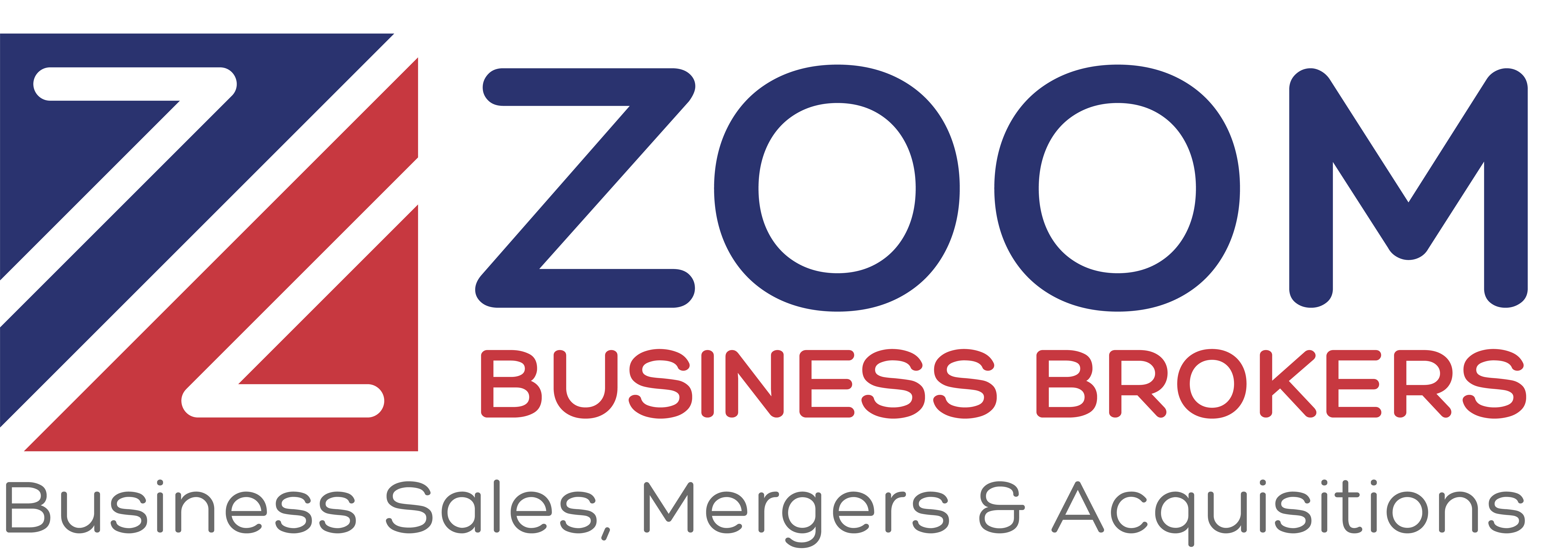
Negotiating the Price Gap Between Buyers and Sellers

Sellers generally desire all-cash transactions; however, oftentimes partial seller financing is necessary in typical middle market company transactions. Furthermore, sellers who demand all-cash deals typically receive a lower purchase price than they would have if the deal were structured differently.
Although buyers may be able to pay all-cash at closing, they often want to structure a deal where the seller has left some portion of the price on the table, either in the form of a note or an earnout. Deferring some of the owner’s remuneration from the transaction will provide leverage in the event that the owner has misrepresented the business. An earnout is a mechanism to provide payment based on future performance. Acquirers like to suggest that, if the business is as it is represented, there should be no problem with this type of payout. The owner’s retort is that he or she knows the business is sound under his or her management but does not know whether the buyer will be as successful in operating the business.
Moreover, the owner has taken the business risk while owning the business; why would he or she continue to be at risk with someone else at the helm? Nevertheless, there are circumstances in which an earnout can be quite useful in recognizing full value and consummating a transaction. For example, suppose that a company had spent three years and vast sums developing a new product and had just launched the product at the time of a sale. A certain value could be arrived at for the current business, and an earnout could be structured to compensate the owner for the effort and expense of developing the new product if and when the sales of the new product materialize. Under this scenario, everyone wins.
The terms of the deal are extremely important to both parties involved in the transaction. Many times the buyers and sellers, and their advisors, are in agreement with all the terms of the transaction, except for the price. Although the variance on price may seem to be a “deal killer,” the price gap can often be resolved so that both parties can move forward to complete the transaction.
Listed below are some suggestions on how to bridge the price gap:
- If the real estate was originally included in the deal, the seller may choose to rent the premise to the acquirer rather than sell it outright. This will decrease the price of the transaction by the value of the real estate. The buyer might also choose to pay higher rent in order to decrease the “goodwill” portion of the sale. The seller may choose to retain the title to certain machinery and equipment and lease it back to the buyer.
- The purchaser can acquire less than 100% of the company initially and have the option to buy the remaining interest in the future. For example, a buyer could purchase 70% of the seller’s stock with an option to acquire an additional 10% a year for three years based on a predetermined formula. The seller will enjoy 30% of the profits plus a multiple of the earnings at the end of the period. The buyer will be able to complete the transaction in a two-step process, making the purchase easier to accomplish. The seller may also have a “put” which will force the buyer to purchase the remaining 30% at some future date.
- A subsidiary can be created for the fastest growing portion of the business being acquired. The buyer and seller can then share 50/50 in the part of the business that was “spun-off” until the original transaction is paid off.
- A royalty can be structured based on revenue, gross margins, EBIT, or EBITDA. This is usually easier to structure than an earnout.
- Certain assets, such as automobiles or non-business-related real estate, can be carved out of the sale to reduce the actual purchase price.
Although the above suggestions will not solve all of the pricing gap problems, they may lead the participants in the necessary direction to resolve them. The ability to structure successful transactions that satisfy both buyer and seller requires an immense amount of time, skill, experience, and most of all – imagination.
The post Negotiating the Price Gap Between Buyers and Sellers appeared first on Deal Studio – Automate, accelerate and elevate your deal making.

6 Tips and 90 Days to Protect Your Business

There can be no way around it, Inc. contributor Brian Hamilton’s April 2020 COVID-19 centered article, “6 Actions to Take in the Next 90 Days to Save Your Business,” isn’t pulling any punches. Hamilton, Founder of the Brian Hamilton Foundation, believes that the next 90-days could be make or break days for business owners looking to navigate the choppy waters of the COVID-19 pandemic. His latest Inc. article provides readers with 6 actions they should take now to survive the economic fallout of the COVID-19 pandemic.
Tip #1 Vigorously Control What You Can
Hamilton’s first tip is to “Vigorously control what you can. Vigorously ignore what you can’t control.” As Hamilton points out, you can’t control the economy; instead, you need to focus on what you can control. His view is that there has never been a more important time to focus, “More than ever, you’ll need to go to war with things within your control.” Now is the time to exercise control.
Tip #2 Guard Morale
During tough economic times, employee morale can be a real issue. This brings us to Hamilton’s second point, “guard employee morale.” Significant drops in employee morale can lead to serious problems with your business, which is exactly what you don’t want to see right now. Hamilton notes that you have to be the general that helps his or her troops rise above potential panic.
Tip #3 Preserve Cash
Hamilton’s third tip is to “preserve cash where you can.” He states, “Right now, your motto should be: Live to fight another day.” The pandemic means that you need to keep expenses down and watch every dollar. No one knows what the next few months, or the next couple of years, could have in store.
Tip #4 Be First in Line
“Be first in line,” is Hamilton’s fourth point. Hamilton wisely pushes business owners to be the first in line for government assistance. This is very good advice, as SBA and other funds are likely to be limited.
Tip #5 Get Back to the Basics
Fifth, Hamilton recommends, “Get back to the basics…starting with monomaniacal customer service.” As always, customers, whether existing or new, are the lifeblood of your business. You can’t afford to lose customers now and for this reason, you need to have a laser-like focus on customer service.
Tip #6 Pivot your Product or Service
Hamilton’s sixth tip is to “Pivot your product or service to new conditions.” Small changes to your business can open up new streams of revenue. Even if these streams of revenue are comparatively small, they could mean the difference between sink or swim! Try to step back and look at your business with fresh eyes and strive to find ways to offer something new to your customers. Whatever you offer should be based on your existing goods and services and not require a new, large expenditure.
The COVID-19 pandemic is obviously disruptive, but it won’t last forever. Hamilton’s advice of focusing intensely on the next 90 days is sound advice. You won’t regret looking for ways to safeguard your business for the next 3 months.
Copyright: Business Brokerage Press, Inc.
The post 6 Tips and 90 Days to Protect Your Business appeared first on Deal Studio – Automate, accelerate and elevate your deal making.

Improving Your Telework Habits

In her recent April 20th, 2020 Forbes article, “Three Keys to Engaged, Productive Telework Teams,” author Rajshree Agarwal, who is a professor of Strategy and Entrepreneurship, explored how to get the most out of telework. This highly timely article covers some very important territory for many companies dealing with the COVID-19 pandemic. Let’s explore Agarwal’s key points so that you can help your team get the most out of telework.
Agarwal notes that people may tend to shy away from sharing personal information and feelings while in the office. But via video conferencing, the story can be different. For this and other reasons, it is necessary for employers to keep in mind that the dynamic between you and your employees may be different when you use video conferencing. This will also often be the case when your employees speak with one another.
She prudently cautions business owners from taking a “business-as-usual” approach to the COVID-19 situation, as it can make them look both unnecessarily cold and out of touch with reality. On the flip side, however, it is also important to not dwell on the negative aspects of the pandemic. Offering some sense of normalcy during the COVID-19 pandemic is a smart move as well.
How you use telework and video conferencing is, in part, about developing the correct balance. On one hand, you’ll want to acknowledge that the situation is serious and must be addressed. But on the other hand, you don’t want to dwell on the pandemic. After all, not effectively handling the work at hand could undermine your business and cause other problems for both you and your employees.
It is in everyone’s best interest to be smart, safe, and acknowledge the bizarreness of the current situation while striving to achieve business goals. The keyword here is “balance.” Agarwal states that “The combination of empathy and purpose unifies individuals, allowing team members to channel their efforts towards shared objectives and values. This is the best antidote for anxiety.”
From Agarwal’s perspective, there are three keys to making telework effective: communication, socialization, and flexibility. First, there has to be good communication. For example, people can’t simply ignore one another’s emails because they are working virtually. She points out that real-time meetings via Zoom or Skype can eliminate some communication issues, but not all.
The second factor to consider is socialization. As Agarwal points out “Engaged, productive teams also take time to socialize.” Working from home alters the typical modes and methods of socialization, but virtual interactions can be used to help people form and develop their social networks.
In short, socialization doesn’t have to end once telework begins. Used judiciously, socializing, and the bonds it creates between co-workers can still continue.
Agarwal’s third key is flexibility. Flexibility is critical, as all team members must adjust to what, for some, may be a fairly radical restructuring of their day-to-day work experience. Those who haven’t worked virtually before may find adjusting to be quite a challenge. Management should strive to be more flexible during telework caused by the COVID-19 pandemic. Trying to maintain the same top-down approach could prove to be problematic.
It goes without saying that telework presents challenges. However, the challenges it represents are not insurmountable. There are benefits to teleworking, and teams can use it to generate solutions that they might have not reached in the typical work environment.
Copyright: Business Brokerage Press
The post Improving Your Telework Habits appeared first on Deal Studio – Automate, accelerate and elevate your deal making.

Don’t Fear Failure, Learn from It Instead

Failure is rarely fun. But it is also a key ingredient in success. While failure can be painful, there is no doubting the fact that the lessons that come from failure can be powerful teachers that provide life-long lessons and even life-trajectory altering results. Summed up another way, failure hurts. But on occasion, not failing could hurt more, especially in the long run.
In her Inc. article, “Why Tons of Failure Is the Key to Success, According to Seth Godin,” author Sonia Thompson, CEO of Thompson Media Group, points out that most people “avoid failure like the plague.” Instead, they spend their time trying to achieve perfection. In the process of adopting this approach, people miss all kinds of opportunities because they are afraid of damaging their egos. Embracing failure is a way to experience many “transformational benefits,” which would never be experienced without the lessons of failure.
Thompson points to the work of 18-time best-selling author Seth Godin who has written about how entrepreneurs who fail more often perform at a higher level. She quotes Godin as follows, “The rule is simple. The person who fails the most will win. If I fail more than you do, I will win. Because in order to keep failing, you’ve got to be good enough to keep playing.” Godin continues that failure imparts a gift of sorts in that it teaches us how to distinguish between a good idea and a bad idea.
As Thompson notes, research supports the notion that if you want a breakthrough idea, you will need to “produce an enormous volume of ideas.” Obviously, most ideas won’t work, but that isn’t the issue. The issue is to work your way through the bad ideas to get to the winners. Sure, it would be great to have nothing but winners. But life and reality don’t work that way. Failure should be seen more as a path forward than the end of the road.
Getting comfortable with failure, in Thompson’s view, is critically important. She believes entrepreneurs should take steps that make them more comfortable with failure, such as detaching oneself from the results.
It is vital to remember that you are not the work. In contrast, the work is part of an ongoing process. Getting good at something takes time, and there will be failures. For this reason, entrepreneurs simply must embrace a “growth mindset.” Don’t think of failure as failure, but instead as part of a learning process. There is no denying that this approach will make you calmer and that, in turn, may help you make better decisions.
There will be failure in life. There will be problems and there will be obstacles. Much will happen that you can’t predict, manage or control, such as the COVID-19 outbreak. The trick is to focus on what you can control and move forward without a paralyzing fear of failure. Because in the end, failure may be one of your best tools.
Copyright: Business Brokerage Press
The post Don’t Fear Failure, Learn from It Instead appeared first on Deal Studio – Automate, accelerate and elevate your deal making.

How to Connect During a Crisis

Small business owners are facing new challenges during this crisis. Communicating with customers requires more focus and depth than ever before. In Mat Zuker’s latest article for Forbes Magazine, he cites Jay Mandel who runs The Collective NYC, a marketing consulting team focusing on a customer’s experience, who underlines the importance of businesses to understand their mission statement and values in order to re-enforce marketing strategies.
Information is Crucial. Each customer purveying your business’s website needs to understand your hours of operation, any limitations to service and what is being done to ensure cleanliness. Providing this information establishes to your customer your seriousness of precautions which will be appreciated during this time.
If your financial situation allows, focus on your employees, donate to charities or offer discounted or free products. By marketing this information, your brand’s scope will bolster with the customer as well.
Utilizing the Customer’s Time. Most customers are adhering to social distancing guidelines put forth by their state and the federal government. Now, more than ever, it is important to exhibit to your customers how your brand can be utilized beyond your brick and mortar. Zuker cites how universities are beginning to offer free online classes and telecommunication companies are offering two months of free service to low-income families; King Arthur flour is promoting its library of comfort food recipes (yes, please!). Thinking beyond your storefront to put your service or product into your customer’s virtual hands is important.
Remember to entertain. By each passing day, customers are looking for new stimulation to help the time go by at home. Movie companies are making the best of the situation by sending theatrical releases to online streaming services. We don’t think it is necessary to always make your customers laugh, but it might be within your branding to aim for content geared towards warmth, humanity and empathy.
The metric for engaging your customers is changing; moving beyond views and shares to quality feedback or social impact on your community. Do not bite off more than you can chew. Cited in Zuker’s article, Social Media Today warns of virtue signaling; meaning declaring a set of values, but not following through on the actual deeds.
Also, this is a fantastic opportunity to consider your marketing strategies for when this crisis ends. What will your business look like once you are able to open the doors? How are you able to stay relevant with your competitors? These are all questions needing answers, but today we must do our best to accomplish what is in front of us.
Read Mat Zucker’s full article here: https://www.forbes.com/sites/matzucker/2020/04/01/content-in-a-crisiswhat-brands-can-deliver/
Copyright: Business Brokerage Press, Inc.
The post How to Connect During a Crisis appeared first on Deal Studio – Automate, accelerate and elevate your deal making.
